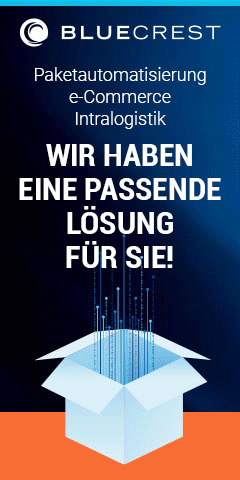
Three concrete methods for increased profitability

Partnering with Postis for optimizing your last mile delivery operations can bring a new dimension of productivity and performance to your business. Learn how Postis can help you transition to agile operations, how you can experiment and test new ideas in your business, but also how you can offer personalized experiences to your customers. Read along and discover strategies that can increase your overall business profitability, no matter how technologically advanced your business is.
According to a large study conducted by Google, the most profitable online businesses are those that simultaneously meet three conditions. These refer to: agile operations, strategy experimentation and testing, and impeccable customer experience focus.
Let’s proceed in analyzing each…
- Agile operations
The onset of the pandemic, in 2020, and the newly imposed restrictions of the time, forced businesses to rethink their operational flows, as well as the channels on which they should sell. Given that normality as we knew it was disrupted, most companies were required to speed up the development of their online presence, a medium often neglected up to that point. The lack of mobility, that affected both the labor force and the buyers, imposed rapid changes on traders to include this new channel together with its newly required workflows. During the pandemic, the highest profitability was recorded by companies that had the ability to respond to the imposed changes in an agile manner.
For the marketing and sales department, this adaptation could be achieved relatively quick and without significant infrastructure costs, due to the large and accessible e-commerce technology options and other solutions available in the market. In terms of operations, things were not as easy. Implementation proved difficult as most processes were a mix of manual and digital, with fewer IT systems in place and often poorly integrated between one another, and with as little warehouse and supply chain management automation as possible.
Disruptions at the core of the supply chains, the lack of containers as well as the lack of operational employees, raised new problems for businesses to address. Everything needed efficient management, while ensuring the right speed in order to cope with the uncertainty they were faced with. The most efficient companies were those that managed to quickly regroup their sales, communication and operational efforts for the online environment, so that they consolidated their position in the market, in their operational segment. Some of the most skillful ones even registered a profitability increase for that period.
However, mobility restrictions, coupled with more orders and other macroeconomic factors, have contributed to the amplification of a much less desired phenomenon, namely inflation. So, starting with August 2021, prices started to increase considerably, and in April 2022, even reached the maximum on record for the last 18 years.
In this context, the war in Ukraine, added a new series of interruptions to business operations and was not shy to bring more increases to fuel and raw materials’ prices. Businesses were forced once more to rethink their strategies in order to cope with the newly arrived challenges.
What are some examples of strategic agility?
Let’s use the example of a fictional company that sells clothes, which normally does business in brick and mortar stores, but which is forced to develop its e-commerce operations in order to survive the pandemic. Prior, the company had no need for delivery operations and thus had no experience for such workflows.
In order to integrate new delivery processes, the company had to resort to at least one courier solution and push towards them the relevant information pertaining to each order. In addition, the company had to implement new types of services, such as card payments or cash on delivery, in an environment that does not know closing times, and operates 24/7. Such changes require experience, expertise, time and costs.
Fortunately, the speed at which technology develops can prove useful in solving even the most niche problems. Today, our fictional company has at its disposal an easy way to respond to such operational problems. It can integrate its systems with a last mile optimization platform, such as the one developed by Postis, in order to easily diversify and scale its delivery capacity, on all sales channels, in the most productive way and in the shortest possible time.
In situations where certainty is not a given, companies need to quickly respond to operations issues, as all of these are directly related to the profitability they will report at the end of the financial year. Opening new markets, new sales and communication channels, as well as testing new audiences carries a high risk for most companies. A courier aggregation solution can ease companies’ need for a quick response to a series of unknown problems, while maintaining or even increasing their profitability rates.
- Experimenting and testing strategies in market
With digitalization, past management paradigms have been gradually replaced by new statistical models that quantify and explain pieces of consumer behavior. Brands that have resorted to testing and experimenting with their market strategies have seen up to 3 times higher ROI, according to the same study by Google.
Following the example of our fictional company, the clothing brand from the previous point must ensure that it distances itself from past business assumptions and develops new skills for understanding its in-market activities. When talking about experimentation and testing in the marketing field we often refer to elements of style and atmosphere (ad text, visuals used in promotion, as well as website functionality elements). In the operational area we should differentiate between testing new sales channels (ecommerce, marketplace, social media), testing new markets and their related audiences from experimenting with various fulfilment solutions.

If the company in question decides to expand its operations regionally, it will be faced with a series of problems and unforeseen situations that might affect its margin indefinitely. To ensure the lowest possible risk associated with this expansion, the fictional company can integrate with a logistics optimization solution, like Postis. Thus, through Postis, the company ensures a high degree of visibility and control over its last mile processes, manages the unforeseen through concrete scenarios, and puts to use delivery flows already tested by international renowned players. The company can leverage Postis’ over time gained experience and thus can reduce the risk associated with regional expansion while, at the same time, benefiting from a wide range of couriers it can collaborate with in the new geographies.
Postis can become a reliable partner for any company that wants to test and experiment with new territories or sales channels. Our platform can help reduce the associated risk and can provide agile solutions for courier management and last mile processes, whether we refer to local or regional expansion.
- Flawless Customer Experience
Once a company has finalized its technological and international expansion, it can turn to customer experience as a source of market differentiation and as a way to further increase its margin profitability.
Although not entirely a new concept, the focus on customers has gained more momentum with the proliferation of web 3.0 technologies such as social media platforms that have facilitated direct interactions between customers and brands and has given the former the power to express feedback. Feedback can be positive or negative, expressing satisfaction or dissatisfaction with the services or products offered by companies. Customer experience has a direct impact on profitability and covers all the interactions customers have with your business, from the first moment they come in contact with the company, to the last moment they make use of the ordered products or services. Throughout this journey, in the case of physical products, delivery plays an important role for the success of the sale and helps create a lasting relationship with your customers.
Why is delivery experience optimization important?
According to a study led by Postis and InsightOut Analytics, rejection rate dropped by 28% for retailers who provided qualitative delivery services. The same study revealed that brand image has been boosted for brands that optimized towards qualitative deliveries.
Why is this important?
First of all, because in any business, the acquisition of new customers will always be more expensive than keeping existing ones. An old marketing principle, Pareto’s law, confirms that 80% of profitability comes from 20% of customers, so the importance of customer loyalty becomes paramount for this topic. Second of all, loyal customers can endorse the brand and can promote it extensively in their friends and acquaintances networks, thus further reducing acquisition costs as their positive support helps businesses expand their customer portfolio.
How can Postis help you build customer loyalty?
Postis can help you increase the visibility of your last mile operations. Via Postis, you can offer accurate status updates to your clientele and real time communications for unforeseen changes that might occur in the lifespan of the delivery. Our track and trace solution helps you keep in touch with your customers, even after they have left your online site, via SMS or email automations, or through a dedicated portal for tracing in transit packages.
Moreover, with Postis’ help you can receive real-time feedback from your customers. Postis’ platform enables you with rating forms, feedback forms and NPS (net promoter score), available to send after each customer order. In the unfortunate case your customer had a bad experience with the delivery, you can quickly react and regain their sympathy, before you lose their trust in the long run or, even worse, before they communicate their dissatisfaction to other possible clients. In addition, delivery transparency reduces considerably the number of help center calls, thus freeing up human resources and helping your business shift from damage control to relationship growth operations.
Overall, last mile customer satisfaction is directly linked to brand customer loyalty, which translates into increased future orders, lower rejection rates while cultivating positive brand advocacy at the same time.
Let’s find out how we can help increase your business productivity. Give us some details, and a Postis specialist will contact you as soon as possible.
Quelle: www.postis.eu
Schlagwörter: Postis









